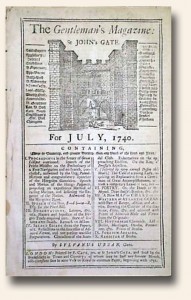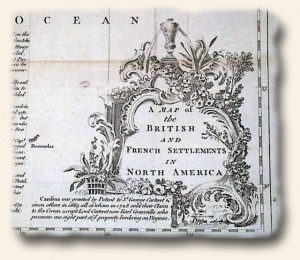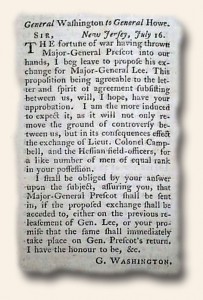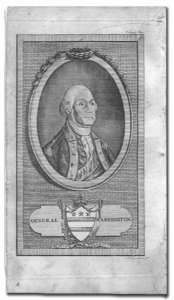I’m New Here: January 23, 2020
January 24, 2020 by Stephanie Williams · Leave a Comment
History’s Newsstand/ Rare & Early Newspapers has a well-deserved reputation for excellence and integrity; and procedures and processes are regularly evaluated to incorporate the highest quality systems available. Our website is undergoing some upgrades, most of which will be indiscernible to the average collector/follower. But in order to be certain things will indeed remain in order, I have been given the assignment to spend some time logging in and out and creating orders from an objective perspective.
 As such, I have perused our web inventory – reading through descriptions and looking at photographs. I have completed numerous purchases the budget of my reality would never allow. And it has been great fun.
As such, I have perused our web inventory – reading through descriptions and looking at photographs. I have completed numerous purchases the budget of my reality would never allow. And it has been great fun.
I learned two notable things. The first is that our website is an amazing tool to navigate the extraordinary inventory here. I searched date, title, topic, item number with successful outcomes. But most interesting to me was the list available by clicking the orange oval button “View All Categories”. This index of more than sixty topics, while not exhaustive, is a fabulous research resource. For those who regularly meander through online topics and items of interest, I encourage the home page of Rare Newspapers as a springboard for many happy hours of informative browsing.
As a second point of interest, I tagged the strangest report I encountered in my wanderings. It seems some of the earliest plastic surgery occurred in India and included rhinoplasty (although not identified as such). Through three separate avenues I arrived at the same description from The Gentleman’s Magazine, published in London, October of 1794.
Included is a fascinating–and extremely early–account of what we would call plastic surgery, being a letter from the East Indies which notes in part: “…the following very curious, and, in Europe, I believe, unknown chirugical [archaic spelling of ‘surgery’] operation which has long been practiced in India with success; namely affixing a new nose on a man’s face…” followed by the various details. Accompanying this is a full page plate of it, with 5 images (see).
Ironically, all these features and items are available on our website in its current state. I just hadn’t taken the time to look.
Have you?
Mid-18th century math challenges found in Gentleman’s Magazines…
July 27, 2017 by GuyHeilenman · Leave a Comment
Two weeks ago, as we were exploring the varied content to be found in 18th and 19th century Gentleman’s Magazines, we took time to focus on the monthly mathematical challenges the publisher would serve up to the subscribers. At the time we provided our readers with a set of challenges from an issue dated May, 1768. Admitting they were a bit difficult, the following week, along with the available solutions which appeared in the August issue, we provided yet another set of mathematical exercises. The results to this 2nd set are shown below. Whether it is content covering the (now) historical events of the day, book reviews, obituaries, poetry, maps, plates (diagrams), and yes, even mathematical challenges, 18th and 19th century Gentleman’s Magazines never fail to deliver on a truly contemporary experience. As we’ve often said (slightly revised): “History (and poetry, and book reviews, and discoveries, and ____) are never more fascinating than when read from the day they were first reported.”
Solutions to the May, 1768 Gentleman’s Magazine’s math exercises…
July 20, 2017 by GuyHeilenman · Leave a Comment
Last week we posted a set of math exercises which were provided in the May, 1768 issue of The Gentleman’s Magazine. Today we post the solutions (see below). Understanding that the set of problems were a bit cryptic to the 21st century mind, the bottom of the solutions below provides yet another set of problems to explore – which appear a bit more straight-forward. We’ll post the solutions to these next Thursday. Before you throw in the towel, don’t forget the famous words of W.E. Hickson: “If at first you don’t succeed…”
Edward Cave Junior, and his Gentleman’s Magazine…
March 24, 2014 by GuyHeilenman · Leave a Comment
 A few months ago we wrote about what is considered by many to be the most successful literary magazine of all time, The Gentleman’s Magazine. While RareNewspapers.com continues to offer many original issues of this title from the 18th and early 29th centuries, few know of the magazine’s or its founder, Edward Cave, Junior. A collector friend recently came across a wonderful posting by The Society of 18th-Century Gentleman which goes into considerable detail concerning both. An excerpt includes:
A few months ago we wrote about what is considered by many to be the most successful literary magazine of all time, The Gentleman’s Magazine. While RareNewspapers.com continues to offer many original issues of this title from the 18th and early 29th centuries, few know of the magazine’s or its founder, Edward Cave, Junior. A collector friend recently came across a wonderful posting by The Society of 18th-Century Gentleman which goes into considerable detail concerning both. An excerpt includes:
“…Edward Cave eventually purchased a small print house and shortly after began The Gentleman’s Magazine. The first issue appeared in January of 1731. Cave quickly became a highly respected publisher and businessman, and “a multitude of magazines arose” all over the world. The magazine was soon the most well-known and highly respected publication in the English language. It is widely believed that Mr. Cave was the first person ever to use the term “magazine” to describe a monthly publication of this type…”
If you’ve never perused this little gem, you’ll be pleasantly surprised with its detailed coverage of events of the day.
Gentleman’s Magazine: a little gem packed with history…
December 27, 2013 by TimHughes · Leave a Comment

As dealers we have been very true to our focus on rare newspapers, and—for the most part—only newspapers. Yes, we have ventured into the occasional old document, pamphlet, colonial currency and the other items I’ve found intriguing, but otherwise we offer only historic newspapers.
But one big exception has been 18th century magazines. As is likely the case with most collectors of history, the over-riding aim is to find historic news reports dated as early as possible, and the availability of newspapers runs quite thin before 1760 (the London Chronicle dates to 1755 and is the single biggest source of period reports back to this period) if British titles are accepted, and only back to about 1787 if American newspapers are the only option.
It was many years ago that I discovered one of the best titles of the 18th century for period news reporting, and it wasn’t even a newspaper. It is a magazine. More specifically, “The Gentleman’s Magazine” from London. Having begun in 1731, its pages captured news reports concerning America which could never be found in period American newspapers, and rarely found in period British newspapers. From its earliest years “The Gentleman’s Magazine” printed reports on the creation of the colony of Georgia, the founding of the town of Savannah, with many issues mentioning James Olgethorpe. From 1736 are reports of William Penn laying out the city of Philadelphia, and the 1730’s has several reports of pirates operating in the Caribbean and the Atlantic, as well as famous highwayman Dick Turpin. Slave revolts in Jamaica, “Customs of the Jews” and other smaller reports from the American colonies round on the 1730’s.
The 1740’s have several items on the slavery issue which would be a topic of discussion on both sides of the Atlantic well into the 19th century. And relating to slavery are several issues of the 1770’s on famous slave/poet Phillis Wheatley.
There are early reports on the sport of cricket, and much on the Jacobite Rebellion including mention of “Bonnie Prince Charlie”. Other curious reports from the 1740’s include text on Handel and his “Messiah”, Ben Franklin mention with various electricity experiments, the death of astronomer Edmund Halley, the origin of the game of chess, and a curious item on a northwest passage to China through Canada. Military events in periodicals are never-ending, and this decade prints the text of the Treaty of Aix la Chapelle, among many other military events.
The 1750’s are highlighted by much reporting on the French & Indian War between the French & the British, with mention of Quebec, Crown Point, Fort DuQuesne and all the other major battle sites. Keep in mind that the American colonies were British possessions at the time so there was much interest in
“The Gentleman’s Magazine” has nice reporting on Ben Franklin’s lightening rod experiments, and there is also a terrific—although inconspicuous—mention of what would become known to all Americans as the Liberty Bell. Under the heading: “America” and with a “Philadelphia, May 10” dateline from 1753 is a report reading:

“Last week was raised and fixed, in the State-House Steeple, the great bell, weighing 2080 lb. cast here, with this inscription,
‘Proclaim liberty throughout all the land, to the inhabitants thereof.” This is how they reported the installation of what would become known as the Liberty Bell.England in reporting events relative to the colonies. A special feature of Gentleman’s was their very early mention of George Washington, a Major in the Virginia military in 1754 and 1755 when he lead others into battle in Pennsylvania. Such mention of Washington in an American newspaper would result in a price well beyond the budget of most collectors.
The 1760’s in “The Gentleman’s Magazine” are highlighted by the growing tensions between the colonies and England. The full text of the hated Stamp Act is found within its pages, and just a year later is found the formal repeal of the Stamp Act by the British King. Other Acts of Parliament harmful to colonial relations are reported as well.
News from the 1770’s begin with the Boston Massacre (and the trial details of those involved), reported in Gentleman’s in nice detail. All the events of the Revolutionary War received excellent coverage, from the Boston Tea Party to Lexington & Concord, the Battle of Bunker Hill, Saratoga, White Plains, Ticonderoga, Cowpens, Guilford Court House and the other military initiatives of the war with considerable mention of George Washington, Gage, Gates, Burgoyne, Ethan Allen, Howe, Greene, Cornwallis, John Paul Jones, and others. There is even much detail on the infamous Benedict Arnold/Major Andre treason.
Historic documents are found within the pages of “Gentleman’s Magazine” as well, including the Articles of Confederation, the “Causes & Necessity for Taking Up Arms”, the Constitution of the United States (in 1787), and the most desired document of all, the Declaration of Independence. At a time when a period printing of the Declaration in an American newspaper will sell for over a quarter of a million dollars, to be able to purchase a 1776 magazine with a timely printing of the Declaration of Independence for under $4000 is a rare opportunity for any collector.
The 1780’s begin with the closing events of the Revolutionary War, including the surrender of Cornwallis to Washington at Yorktown, Virginia, and shortly thereafter the formal text of the Treaty which ended the Revolutionary War. There are reports on Captain James Cook’s famous voyages of exploration, the obituary of Benjamin Franklin, and with attention focusing more on European reports later in the decade are reports of the fall of the Bastille and the French Revolution, and into the 1790’s with the mutiny on the Bounty, the guillotine execution of Louis XVI and Marie Antoinette, then into the early 19th century with the Battles of Trafalgar and Waterloo. Gentleman’s also printed the text of Washington’s final state-of-the-union address, and then just a few years later, his death.
A very nice bonus found in many of the pages of Gentleman’s is maps & plates. They cannot be found in newspapers of the day. Printed separately from the regular pages of the issue and tipped within, most of the maps fold out to be double the size of the issue, and they includes some of the more desired maps one would want of the 18th century, including Philadelphia, the colonies (from 1755), Pennsylvania, Connecticut, Rhode Island, the Caribbean, St. Augustine, the entire western hemisphere and so much more. Many collectors choose to frame the maps separate from the issue as they are very decorative and are typically dated in an upper corner.
Plates include the Philadelphia State House, later to be known as Independence Hall; St. Philip’s Church in Charleston, the fort at Bunker’s Hill, Ben Franklin’s ‘Square of Squares’, the guillotine which beheaded Louis XVI and his wife, a slavery medal, and even a plate of the Garden of Eden. Plus there is so much more.

The “Gentleman’s Magazine” is a little gem packed with all the history one would want to find from the 18th century. Measuring about 5 by 8 inches and typically having about 40 pages they take up very little room in a collection. But best of all it is an accessible title, and at prices far below what would be found in comparable American & British newspapers of the same period.
There can be little excuse for holding back on buying the best events in American history if one is willing to add this famous & successful title to their collection. And there certainly will be a time when even this title will become very scarce as others discovery it as the little gem just begging to be collected.
Note: Rather than include an endless number of (annoying) links above, if you have interest in any of the topics discussed, simply go to the following link and enter the topic into the search field: www.RareNewspapers.com
Print date for the Gentleman’s Magazine…
July 23, 2012 by TimHughes · Leave a Comment
 Actual printing dates of monthly magazines have always been difficult to establish, but some times dated news reports will give some indication. An advertisement for the Gentleman’s Magazine in the “Daily Post-Boy” of London, September 4, 1732, provides a valuable clue for the earliest issues of this title (it began publishing in 1731). Note that the advertisement has at the top: “September 2 was published…The Gentleman’s Magazine…for August, 1732…”. So at least during the early years of this magazine’s existence it printed a few days after the end of the month.
Actual printing dates of monthly magazines have always been difficult to establish, but some times dated news reports will give some indication. An advertisement for the Gentleman’s Magazine in the “Daily Post-Boy” of London, September 4, 1732, provides a valuable clue for the earliest issues of this title (it began publishing in 1731). Note that the advertisement has at the top: “September 2 was published…The Gentleman’s Magazine…for August, 1732…”. So at least during the early years of this magazine’s existence it printed a few days after the end of the month.
Another interesting tidbit is provided in this advertisement as well. We knew that the first several issues of the first year of “Gentleman’s Magazine” printed at least six editions, as some were noted as such on the title/contents page, but we never knew when they were reprinted. Note the very bottom of this advertisements mentions: “…Where may be had, The former Numbers, except Numb 1 and Numb. II which will be republished a 4th Time in a few days.” This indicates that the fifth edition of the January and February, 1731 issues were printed in the first week of September, 1732.
A cynical view on the Constitutional Convention…
December 3, 2011 by TimHughes · Leave a Comment
Perhaps it would not be a surprise that a British report on the beginning of the American Constitutional Convention would have a cynical slant, but this report seems to stretch the point. This observation appeared in the London “Gentleman’s Magazine” issue of July, 1787.
When did the “Gentleman’s Magazine” print the Declaration of Independence?
November 14, 2011 by TimHughes · 5 Comments
 Fellow collector Michael Gulvin asks a question which many other collectors may have wondered: “On what day of the month did the Gentleman’s Magazine for August, 1776 become available? We have a time-line for the American newspapers, and we know that the London Chronicle printed the Declaration in its August 17th issue, but do we know the actual date the Gentleman’s Magazine printed the Declaration of Independence for its August issue?”
Fellow collector Michael Gulvin asks a question which many other collectors may have wondered: “On what day of the month did the Gentleman’s Magazine for August, 1776 become available? We have a time-line for the American newspapers, and we know that the London Chronicle printed the Declaration in its August 17th issue, but do we know the actual date the Gentleman’s Magazine printed the Declaration of Independence for its August issue?”
Magazines typically published very late in the month shown on the title/contents page. With the “London Chronicle” publishing the Declaration of Independence in its August 17, 1776 issue, and presuming they had interest in publishing such a significant document as early as possible, it is presumed the Declaration was received in London very close to that date. Their previous issue was dated Aug. 15, so August 15-17 would be the presumed period when the document arrived in London. It is curious to note that the “London Gazette” never printed the Declaration of Independence.
Monthly publications are more difficult to pin down in terms of publication dates, however datelines of news reports found within offer great clues. The Historical Chronicle near the back of the August issue of the “Gentleman’s Magazine” has datelines beginning July 10 and the latest date mentioned is August 31, the very last day of the month. Obviously the magazine could not have printed prior to August 31, so the first day or two of September would be the presumed printing dates.
The same was true with American magazines as I recall the June, 1776 issue of “The Pennsylvania Magazine” had the very significant announcement that Congress had voted to approve the Declaration of Independence, with a dateline of July 2, 1776. Obviously that June issue was printed early the following month.
First use of the term “Columbia”…
December 6, 2010 by TimHughes · Leave a Comment
Finding “first” mentions of significant, people, places and terms is always a delight for the rare newspaper collector, and with the internet–and the time required–many fascinating items can be found.
The term “Columbia” as a reference to America, very commonly used through the 19th century in both print & image, was first used in the London publication “Gentleman’s Magazine” in 1738. Because the printing of Parliamentary debates was illegal in England, they appeared under the thinly veiled heading of “Debates in the Senate of Lilliput” or similar heading, with names & places often fictitious or taken from Johnathan Swift’s famous work, which was the literary sensation at that time. The term Columbia was coined by the famed Samuel Johnson, a regular contributor to the “parliamentary” reports found in “The Gentleman’s Magazine“.
In the June issue of 1738, the debates from Parliament note: “…It is observable that their conquests and acquisitions in Columbia (which is the Lilliputian name for the country that answers our America,) have very little contributed to the power of those nations…”.
A significant “first use” of a very popular poetic name for the United States of America.
18th century American magazines: one to share…
February 2, 2009 by TimHughes · 3 Comments
 Magazines published in 18th century America were relative few & far between when compared with newspapers of the same era. From the first magazine in 1741 through the Revolutionary War only 18 magazine titles were published, most lasting but a few issues. During the Revolutionary War only one magazine was in print, and it only lasted from January, 1775 through July, 1776, this last issue containing the Declaration of Independence.
Magazines published in 18th century America were relative few & far between when compared with newspapers of the same era. From the first magazine in 1741 through the Revolutionary War only 18 magazine titles were published, most lasting but a few issues. During the Revolutionary War only one magazine was in print, and it only lasted from January, 1775 through July, 1776, this last issue containing the Declaration of Independence.
Magazines have always been of interest to me since almost all titles carried various news of the day, typically within the back several pages, much like the British “Gentleman’s Magazine” had done since 1731. Some American magazines contained plates as well, but finding issues with the plates still intact can be extremely difficult and frustrating. The more noteworthy the plate, the less likely it will be present, typically removed by some previous owner many years ago. So when issues come on the market with significant plates still bound within the issue, it’s a moment of much excitement.
Here is one from our private collection, The Columbian Magazine from Philadelphia dated January, 1787, which contains a full page plate of “General Washington”, in addition to a foldout plate of the “Meteorological Observations” for the month of December, 1786. We are pleased to share these photos with our fellow collectors, and wish all of you the great luck in finding your own American magazine with notable prints!




